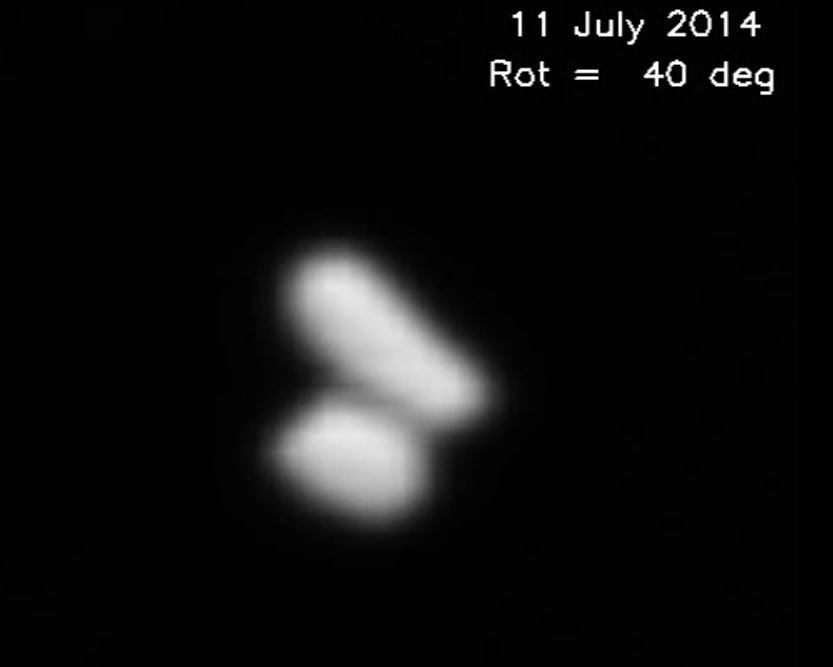[/caption]
Time critical is approaching for the Rosetta spacecraft and it's flyby of the asteroid 2867 Steins. Closest approach is expected on September 5, at 20:58 CEST, (Central European Summer Time), 2:58 pm EDT (US Eastern Daylight Time). To help the public follow the flyby, the Rosetta team now has a blog available, and a timeline has also been posted. At the time of closest approach, Rosetta is planned to be 800 km from the asteroid, passing by at a speed of 8.6 km/s relative to Steins. Both Rosetta and Steins will be illuminated by the Sun, providing an excellent opportunity for science observations.
Although most scientific observations will take place in the few hours around closest approach, several instruments will be switched on for a longer time around the event.
Between 40 and 20 minutes before closest approach, Rosetta will be flipped and the spacecraft will switch to a specially designed asteroid fly-by mode, an optimal configuration that supports the intensive observation and tracking activity of the on-board instruments. The first images and results will be available for presentation to the media during a press conference on Saturday, September 6 at 12:00 CEST. [caption id="attachment_17562" align="alignnone" width="250" caption="Asteroid Steins orbit. Credit: ESA"]
[/caption] The timeline is as follows (more details are available in the Rosetta Blog -- all times CEST (Central European Summer Time):
1 September 02:20 Instruments switched on (except OSIRIS which was already on for the navigation campaign)
4 September 07:20-11:20 Slot for possible trajectory correction manoeuvre (36 hours before closest approach) 13:20-18:20 Last opportunity to acquire images for optical navigation campaign
5 September
07:20-10:20 Slot for possible trajectory correction manoeuvre (12 hours before closest approach)
10:20 Navigation cameras switch to tracking mode - initially both used, then use CAM 'A' only (to be decided)
11:00 Uplink fly-by commands for asteroid fly-by mode (AFM)
Includes an update to the command profile already on board & the final updated AFM commands (only if 1 CAM at least is tracking)
20:18-20:38 Spacecraft flip over
20:39 Spacecraft switches automatically to asteroid fly-by mode
20:56 Sun illuminates Rosetta from the back and the asteroid fully
20:58 Closest approach, at a planned distance of 800 km from the asteroid
22:27 First post-fly-by acquisition of signal (AOS) - telemetry received via NASA's Goldstone ground station
22:30 Start of science data download via Goldstone
6 September
12:00 Live streaming of Rosetta Steins fly-by press conference from the European Space Operations Centre begins
13:00 Images from fly-by published on ESA web
15:00 End of press conference streaming
16:01 End of reception of first set of science data
News Source:
ESA
 Universe Today
Universe Today
